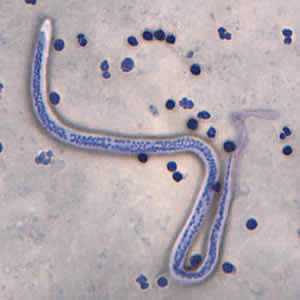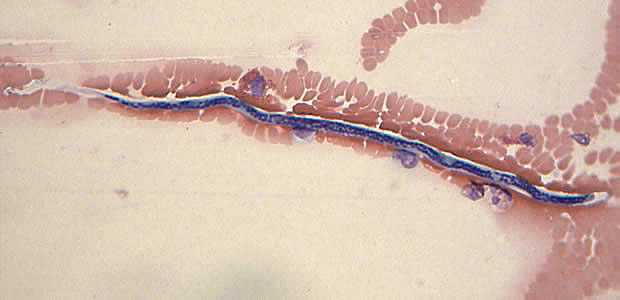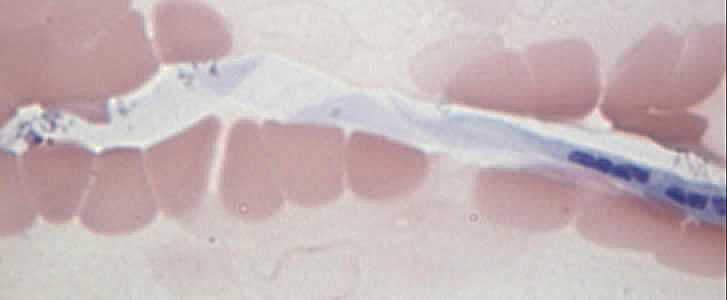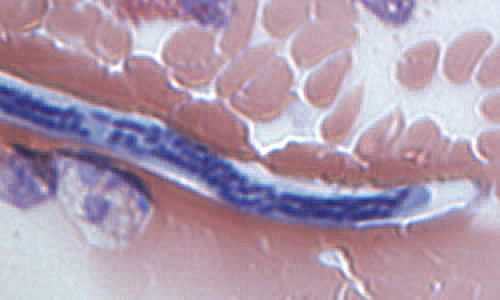
Case #168 - November, 2005
In April 2005, DPDx telediagnosis inquiries received a request for assistance from the Oregon State Public Health Laboratory. Images from a thick and thin blood smear were submitted. Based on information that came with the specimen, the smears were most likely stained with Giemsa. The only case history available was that the patient lived in Africa until the beginning of this year. Figures A-C show what was observed on the thick smear. Figure C is a close-up of the posterior end of the object in Figure B. Figures D-F show what was observed on the thin smear. In Figure D, the object measured 300 micrometers; close-ups of the posterior and anterior ends are shown in Figures E and F, respectively. What is your diagnosis? Based on what criteria?

Figure A

Figure B

Figure C

Figure D

Figure E

Figure F
Case Answer
This was a case of Bancroft’s filariasis caused by Wuchereria bancrofti. Diagnostic features included:
- the presence of a sheath. Usually the sheath does not stain well with Giemsa, however it is partially visible in Figures A, D, and E.
- the nuclei in the tail evenly dispersed and terminating before the end of the tail (Figures C and E). This morphologic feature distinguishes W. bancrofti from Loa loa as the nuclei in the tail extend all the way to the tip of the tail in L. loa microfilariae.
- a size within range for W. bancrofti (240 to 300 μm) in stained blood films.
More on: Lymphatic Filiariasis
This case was kindly contributed by the Oregon State Public Health Laboratory.
Images presented in the monthly case studies are from specimens submitted for diagnosis or archiving. On rare occasions, clinical histories given may be partly fictitious.
DPDx is an education resource designed for health professionals and laboratory scientists. For an overview including prevention and control visit www.cdc.gov/parasites/.
- Page last reviewed: August 24, 2016
- Page last updated: August 24, 2016
- Content source:
- Global Health – Division of Parasitic Diseases and Malaria
- Notice: Linking to a non-federal site does not constitute an endorsement by HHS, CDC or any of its employees of the sponsors or the information and products presented on the site.
- Maintained By:


 ShareCompartir
ShareCompartir